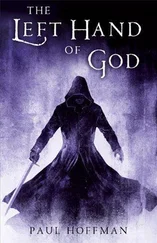But our teachers had acted at the very height of our put-upon duality, and their command effected a desperate confusion, which manifested itself onstage that night as complete theatrical anarchy. We addressed one another by whatever names happened to pop into our heads, and forgot almost every scripted line, leaving our audience with only the vaguest notion of the drama’s direction. The performance ended in chaos and tears, with our baffled parents applauding politely and our teachers holding their shocked faces in their hands.
Sadly, the confusion didn’t end there. For weeks, we were distracted during classes, failing to respond to our teachers’ direct inquiries, and were moody and unresponsive at home. When we met in the halls or on the playground, we greeted each other with incorrect names or none at all.
Most of us recovered, but Jason has married seven times, and Heather, from whom no one has heard in twenty years, is rumored to have gone mad. One lonely fall afternoon I called our local mental hospital in search of her, but was told that no patient by that name was in residence.
A local man, lonely and depressed due to his shyness and fear of humiliation, at long last gathered the courage to seek the advice of a psychologist, who, after listening carefully to the man’s complaint, made a drastic suggestion: that the man visit a succession of public places dressed in an outlandish manner, and thus conquer his fear by immersion, much the way an infusion of a virus can inoculate a patient against disease.
The shy man was resistant at first, but in time decided that, since nothing else had worked, he would give this plan a try. First he visited the post office as Napoleon, and then the grocery store as George Washington; he attended a play as a mime, reacting to it with the appropriate exaggerated motions and facial expressions, and boarded a transatlantic airline flight dressed like a circus clown, with a multicolored wig, red nose, painted smile and giant shoes.
Soon these outings became commonplace, and the shy man was no longer afraid of them. But his day-to-day encounters with others remained strained, until he made a startling discovery: when he dressed like his psychologist — that is, in tweed jacket, round eyeglasses, brown slacks and loose necktie — he could interact freely with others. When, in addition, he grew a beard like his psychologist’s, he discovered himself possessed of a deep empathy, and quickly became known to his co-workers and neighbors as a person who would listen to their problems and give clearheaded advice and sympathy. It wasn’t long before he began to informally offer his services as a counselor, and soon his name and reputation had spread via word of mouth, bringing him countless clients and admirers, and a not inconsiderable amount of money. He quit his job and took on counseling full time.
Eventually the man’s psychologist got wind of his patient’s charade, and visited his home to confront him. Neighbors recall hearing a heated argument erupt in the hallway, and its muffled continuation behind a closed door. Hours later, a passerby reports, a man fitting the psychologist’s description left the building. This man looked haggard, his hair snarled and his face bloodied, and he walked with a pronounced limp.
As it happens, the former shy man claims that it was he who was seen leaving the building, not the psychologist; he had been viciously beaten by the jealous psychologist, he says, and went out to buy first aid supplies. At that time, the former shy man maintains, the psychologist had already been gone for more than an hour. However, the psychologist has not been seen since, and foul play is suspected. Some of us believe the former shy man’s story and think that the psychologist, ashamed of his behavior, did himself in; others believe that the former shy man murdered the psychologist and disposed of the body in some clever way.
There is a third group, who believe that the psychologist killed the former shy man and took his place, and in fact is now posing as the former shy man, which, given their physical similarities, is not entirely out of the question. But there is still the matter of the missing body, not to mention the implausibility of any murderer’s remaining so close to the scene of the crime. This third group are thought by most of us to be crackpots, and their theory is given little credence by the newspapers or police.
One of the odd selling points of our property here on the outskirts of town was a small graveyard, long inactive, that stood bordered by a crumbling stone wall at the top of our little hill. It belonged to the county but was surrounded by our land, and could be accessed only by a narrow dirt track, also the county’s, that snaked through our land from the main road. This track was almost completely overgrown, and the cemetery itself was choked with weeds, which we tended to cut once or twice a year, out of respect for the dead, and for our own satisfaction, as we enjoyed sitting in the cemetery from time to time, contemplating the nature of life and death and listening to the sounds of the countryside.
The oldest gravestone was from 1840, and we often wondered about the dozen or so people buried there. Most had the same last name; some were children. We surmised that the dead were a family of farmers who had bravely tried, and failed, to make our rocky land yield food.
One morning the sound of a weedwhacker reached our house, and then the rumble and clank of a backhoe. Alarmed, we walked out into the woods, following the noise. It had come from the graveyard, where workmen were digging a gaping hole in the hallowed ground.
We stopped them and demanded to know what was going on. They told us that somebody new was going to be buried there. Indeed, the weeds had been cut and the road cleared, as if in preparation for a funeral.
A few days later we heard mourners walking in from the main road, and the sounds of sermonizing and grief. Not long after this, we read the dead man’s obituary in the paper. As it happened, he was a member of the long-dead farm family we had imagined. However, the family weren’t farmers: they were actually insane homesteaders who had killed their own children. The dead man, a descendant of a cousin of the murdered children, had for some reason requested burial there, and the county had obliged.
We walked out to the graveyard once more, to see his stone. It stood straight, gleaming and new, its engraving clear, in contrast to the crooked and worn stones of his ancestors. After that, we no longer went to the graveyard. Sometimes we heard a pickup truck rattling down the country road and leaving a few minutes later, as if someone were visiting the fresh grave. But after a while, even those visits stopped.
We no longer miss our trips to the graveyard, but all too often wonder where on our land the children were killed.
An old friend disappeared for more than ten years, then resurfaced, thinner and quieter and utterly sapped of her former vitality. She winces when spoken to and wears foam earplugs on the street. I asked her where she had been.
She told me that she had lost her mind, as a result of her graduate studies in literature, which she has permanently abandoned. Her doctoral dissertation was to have been on the “saturation hypothesis,” a theory of her own devising which held that every word in a work of literature, far from having one or two most likely meanings, meant everything that any reader could make of it, and that each supposed meaning was of equal value to all others. This theory, she said, dovetailed with other current literary theories that gave more power to critics and less to writers, who tended to write with finite intentions.
Читать дальше










